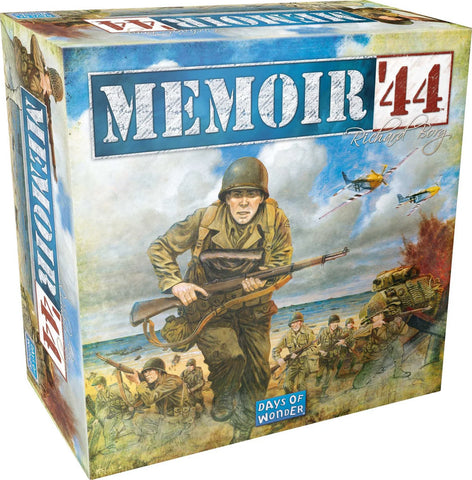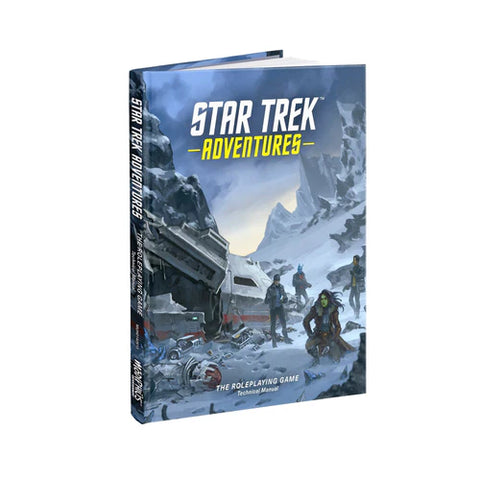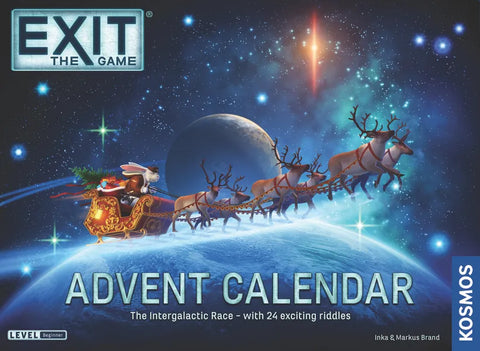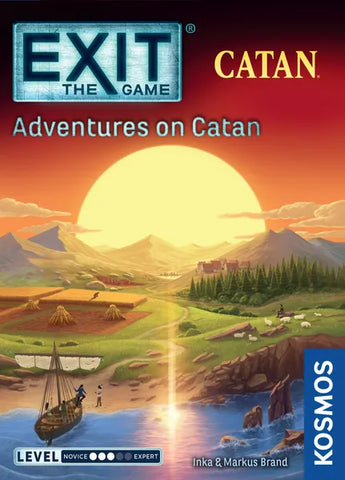
Memoir '44 (2025 Refresh)
Board Game, 2 Players or Teams, ages 8+
Memoir '44 is a historical boardgame where players face-off in stylized battles of some of the most famous historic battles of World War II including Omaha Beach, Pegasus Bridge, Operation Cobra and the Ardennes.
Memoir '44 includes over 15 different battle scenarios and features a double-sided hex game board for both beach landings and countryside combat. Each scenario mimics the historical terrain, troop placements and objectives of each army. Commanders deploy troops through Command and Tactic cards, applying the unique skills of his units -- infantry, paratrooper, tank, artillery, and even resistance fighters -- to their greatest strength.
"By design, the game is not overly complex", says Memoir '44 designer, Richard Borg. "The game mechanics, although simple, still require strategic card play, timely dice rolling and an aggressive yet flexible battle plan to achieve victory." In addition to the large, double-sided gameboard, Memoir '44 includes 144 amazingly detailed army miniatures - including historically accurate infantry, tanks and artillery; 36 Obstacle pieces, 60 illustrated Command cards, 44 Special Terrain tiles, and 8 Custom Wooden dice.
Memoir '44 is designed for 2 players but easily accommodates team play. And with Memoir '44 Overlord scenarios, players can use multiple boards and up to 8 players to conduct large scale operations, experiencing the challenges of troop coordination and military chain of command on a large scale battlefield. Average game length is between 30 and 60 minutes, encouraging match play where players can command first one side and then the other.
The Memoir '44 series consists of the base game and a number of expansions.
This game is based upon Richard Borg's Command and Colors system.
+++++++++++++ Counter review
2 players, 30 minutes per scenario designed by Richard Borg reviewed by Greg Schloesser
Ever since Battle Cry was released by the Avalon Hill division of Hasbro back in 2000, the scuttlebutt was rampant that the same system would be adapted for other time periods. The possibilities seemed limitless: Napoleonic era, American Revolution, Middle Ages, World Wars I & II, Vietnam and more. Rumors swirled, deals were consummated, but other than an Italian rip-off, none were forthcoming - until now. Days of Wonder has filled the void with a wonderful production of Memoir '44, adapting the simple yet fun-filled game system pioneered in Battle Cry to World War II, with emphasis on the Allied invasion of Normandy.
It is worth mentioning that the subject matter - World War II - may be sensitive to some folks. I fully understand that some individuals refuse on principle to play games dealing with warfare. If you are one of those individuals, then you are best advised to move on. Memoir '44 is a game based on the various battles that raged in connection with the Allied invasion of Normandy in June 1944. While no attempt is made to glorify warfare, the game does involve the simulation of military conflict and the resulting casualties. If you find such a subject distasteful, give this game a pass. If, however, you can separate a game from the brutality of historic conflict, then Memoir '44 is definitely worth your time and investment.
Memoir '44 contains sixteen separate scenarios, ranging from the various beach invasions conducted on D-Day, to the inland battles of St. Mre-Eglise, Pegasus Bridge, Mont Mouchet and others. Two players lead the Axis and Allied forces into battle, maneuvering their infantry, artillery and armored forces across various terrain, hoping to achieve set objectives and capture the day. Each scenario has specific victory conditions (called ``Victory Medals'' in game parlance), from capturing specific objectives to eliminating enemy units.
Lest one think this is a complicated war game designed for the true grognard, let me assure you that it is not. Indeed, it is quite simple, serving as an excellent introduction to the war gaming field. However, it has shown much wider appeal that that, as the simple mechanisms, easy-to-learn rules and brilliant production values has made it appealing to dedicated gamers, casual gamers and families. It is also the type of game you can have hours of fun playing with your child, be it a boy or a girl.
Folks familiar with Battle Cry (not the 1960's Milton Bradley American Heritage version) will be in familiar territory here. The large, double-sided board is divided into three sectors - left, center and right - and has a hex grid superimposed upon it to regulate the movement of the pieces. The terrain depicted on the board is modified by the placement of separate terrain hexes appropriate to the scenario being played. Terrain includes forests, hedgerows, hills, towns & villages, rivers & waterways, oceans, and beaches. There are also separate miniatures and counters representing bunkers, hedgehogs, sandbags and wire. This abundance of terrain and obstacles not only provides quite a bit of variety and strategic challenges, but it also allows for players to devise their own scenarios and adapt the board as needed.
Players set-up the terrain their forces as prescribed in the appropriate scenario. Activation and movement of units is dictated by a deck of ``Command'' cards. These cards generally allow players to activate, move and/or fire various units in various battlefield sectors. For instance, the ``Probe'' card allows the player to activate two units in the specified sector (right, left or center), while the ``Armor Assault'' card allows the player to activate up to four armour units, wherever they may be located on the battlefield. Players alternate playing cards, moving and firing the appropriate units, and drawing a card to replace the one played. Depending upon the scenario, the number of cards held by each player may vary. This is done in an effort to reflect the actual command situation that existed in the historical encounter, and sometimes to help balance the scenario a bit better.
Each type of unit has its own movement and fire capabilities. These capabilities can be further modified by the terrain and scenario restrictions. For instance, infantry can normally move one space and still fire, or two spaces and not fire. However, if they enter a forest or town, they must end their movement and may not fire. Armor is much more mobile, while artillery is slower. One of the challenges is to coordinate these three types of units for maximum effect.
Firing is a simple matter of rolling dice, hoping to roll symbols matching the targeted unit. The number of dice rolled depends upon several factors:
1) The type of unit attacking; 2) The distance the firing unit is from the target unit; and 3) The terrain occupied by the targeted unit.
For example, an attacking infantry unit located adjacent to the targeted unit rolls three dice. If the target is located two hexes away, the attacker rolls two dice. If the target is three hexes away - the maximum distance in order for an infantry unit to fire - the attacker only rolls one die. If the target is located in a forest, town or behind certain obstacles, the number of dice rolled is further reduced. Artillery suffers similar reductions, while attacking armor always rolls three dice, reduced only by terrain.
Each ``hit'' results in the removal of a unit from the targeted group. Most groups contain multiple units, meaning they can suffer several casualties before being completely eliminated. An eliminated group results in a ``Victory Medal'' for the attacker, with the accumulation of a prescribed number of victory medals resulting in victory.
As with most military simulation games, there are other rules pertaining to line-of-sight, retreats, terrain, special units, and or peculiar situations. These rules are very straightforward and easy to grasp. There truly is nothing complicated here. There is little doubt that ``playability'' was stressed over historical accuracy. For many, many people - myself included - that is just fine. Don't get me wrong, I enjoy the occasional detailed, historically accurate war game. I still adore Squad Leader and Paths of Glory. However, Memoir '44 doesn't pretend to play in that league. Rather, it is clearly designed to be an easy, fast-playing game that can be played by all age groups. The emphasis here is squarely on ``fast fun'' as opposed to detailed simulation. In this regard, Memoir '44 accomplishes its goal quite splendidly.
Adding to the fun are the outstanding production values of the game. The game contains 180 detailed miniatures representing the Axis & Allied forces, as well as various obstacles. The graphic illustrations on the Command cards are clear and pleasing, as are the board and terrain graphics. The rules are lavishly illustrated in full color, and are easy to read and understand. I can't imagine many people having trouble quickly learning the game straight from the box. Everything here screams ``quality'', and the extra touches - including the plastic holders on which players display their cards - are a true mark of excellence.
Days of Wonder seems committed to supporting Memoir '44, and have already released several new scenarios. Further, they have made available a program on their website wherein players can devise their own scenarios. I don't think it will be too long before we see expansion packs, or even further games using the same system.
So what's not to like? Well, taken for what it is meant to be - a light, easy-to-learn ``war'' game - not much. However, some folks may well quibble with a few issues. First and probably foremost will be the ``luck of the draw'' issue regarding the Command cards. Like many games utilizing cards, some of the cards are more powerful than others. It is possible for one player to simply get lucky and draw more powerful cards than his opponent. It is also possible for a player to go many turns without drawing cards which allow him to activate units in a particular sector. These situations can be frustrating and may well be enough to tarnish the opinion of some. Over the course of a game or two, such issues should generally level-out - but they can be disturbing when they surface.
Another factor to consider is that the scenarios are not very balanced. The Axis have clear advantages in some, while the Allies have the upper-hand in others. The designer has been very up-front in stating that it was not his intent to ``balance'' the scenarios. Rather, he attempted to make them as close to historical accuracy as the simplicity of the game system allows. That is the main reason the rules call for player to play a scenario twice, switching sides between games.
Could the game be improved? Sure - few games couldn't benefit from some tinkering. However, I really don't see much need here. As mentioned, for what it is attempting to do, Memoir '44 easily achieves its goal. It is simple, yet there are decisions to be made regarding which units to activate, where to move them, when to launch an assault, when to hunker down in defense, etc. Managing one's cards and planning one's maneuvers are critical elements in the game. Rolling well also doesn't hurt! Memoir' 44 is a very good game, filled with fun and exciting moments. It is a game that should have wide appeal - and deserves to reach a wide audience.






